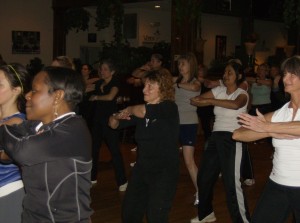Along with countless other health benefits, exercise is proven effective in overcoming depression and anxiety. Additionally, once symptoms are alleviated, exercise can help prevent these gloomy intruders from returning. Although some people suffer from depression year round, mental health professionals note it tends to peak this time of year.
Why Now?
Whether holiday family visits have you on edge or absent loved ones are leaving you lonely, the conditions are ideal for feeling heavy. Emotionally charged gatherings are, unfortunately, commonplace. And an invigorating workout is more beneficial than that extra glass of merlot or a quick cigarette. It’s certainly better than pulling the covers over your head and sleeping through what can be a beautiful season.
Winter depression or winter blues, clinically known as seasonal affective disorder (SAD), refers to those who suffer from depressive symptoms specifically at this time of year. These seasonal mood variations are thought to be related to decreased sunshine during colder months. Treatment often involves light therapy; combined with aerobic exercise, the therapeutic effect significantly increases.
Tips to Get You Moving in the Best Direction
Movement is needed. It gets you off the couch, away from the fridge, and absent from the computer’s blinking cursor. Determine which activities you enjoy and make them part of your regular routine. The benefit is enhanced when surrounded by other active individuals, such as Center members. Often depression and anxiety are exacerbated when isolated or confined to the house.
To significantly improve symptoms of depression, experts recommend exercising for a minimum of 30 minutes daily, 3 to 5 days per week. Sound overwhelming? Start small with 10- to 15- minute increments at a time.
Vigorous workouts can help relieve anxiety and a depressed mood more quickly. Consider running on the treadmill or taking a cycling class. The aerobic nature of these activities releases neurotransmitters and endorphins, “happy” brain chemicals. Anything that works up a sweat is helpful. The increased body temperature is thought to produce an overall calming effect.
“The benefit of Group Fitness classes is twofold. Participants get a fabulous workout, along with social interaction,” shares Regional Group Fitness Director Cheryl Ziegler. Many suffering from depression remove themselves from their social scene, which can increase feelings of sadness. Taking action to improve your body can simultaneously improve your mood when surrounded by smiling, friendly faces. A workout buddy might be just the Rx required! You are not alone in the journey to better physical and mental health.

Consider classes like Yoga and Pilates, where the mind-body connection is strong. “Balance and energy are the focus. Concentration and proper form are essential to a successful workout in these disciplines. This interrupts your mind from the negative thought processes associated with depression,” Cheryl shares. Also, learning something new—perhaps Zumba or kickboxing—can provide a positive spark. The latter will certainly help relieve tension, your holiday-related need to hide in the closet while guests mingle or otherwise.
Regional Fitness Director Doug Hatten advises, “Check in with our on-site nurses. Keep track of your progress to encourage a positive outlook. By obtaining your initial baseline health statistics, you can witness improvement throughout your workout program.” Overcoming challenges and meeting exercise goals can increase self-confidence and improve how you feel about yourself and your appearance. The first step to feeling better is taking care of yourself. Get your needs met. Acknowledge your improvements and reward yourself. You deserve it!
Be Reasonable
Keep your expectations realistic. Praise yourself for every step, swim stroke, or dance that propels you in the right direction, regardless of how small. If exercise is perceived as a chore, it can feel like another wave of drudgery in a sea of negative thoughts. Perhaps talk with a personal trainer at the Center to set goals within your reach. Assure yourself that a missed day on the Exercise Floor is not a reason to quit. Keep going. Before long, you’ll notice pep in your step. And the reflection staring back in the darkened windowpane will be wearing a smile.
Additional Support
Exercise will help ease symptoms of anxiety and depression. However, it should not substitute for advice from your doctor or mental health provider. Often, exercise complements an overall treatment program that includes psychotherapy and possibly medication. Before long though, some regular heart-thumping might be all you need.
Image credit: (windowpane) www.flickr.com/photos/lonetown
 Fitness & Wellness News Your Source for Fitness News, Wellness News, Health News, and Nutrition News!
Fitness & Wellness News Your Source for Fitness News, Wellness News, Health News, and Nutrition News!



